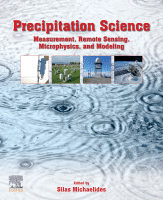13.09.2022
New Book Chapter Published
"The potential of using satellite-related precipitation data sources in arid region"
Precipitation Science: Measurement, Remote Sensing, Microphysics and Modeling addresses the latest key concerns for researchers in precipitation science, mainly observing, measuring, modeling and forecasting. Using case studies and global examples, the book demonstrates how researchers are addressing these issues using state-of-the-art methods and models to improve accuracy and output across the field. In the process, it covers such topics as discrepancies between models and observations, precipitation estimations, error assessment, droplet size distributions, and using data in forecasting and simulations. Other sections cover improved standard approaches, novel approaches, and coverage of a variety of topics such as climatology, data records, and more.
In this book chapter the general factors affecting the equilibrium and stability of arid regions are discussed, with particular focus given to rainfall, the primary factor influencing the continuity and development of these environments. Unfortunately, the scarcity or complete lack of rain gauges in such areas complicates the collection of sufficient rainfall data. Consequently, systematic steps are proposed toward the development of alternative analyses of the spatiotemporal distribution of rainfall in arid regions. The foremost approach is the incorporation of remote sensing data, along with the appropriate classifiers, into the indirect evaluation of rainfall. For the purpose of assessing the suitability of the proposed methods, a detailed study on rainfall in the eastern side of the Gulf of Suez in Egypt is presented.

